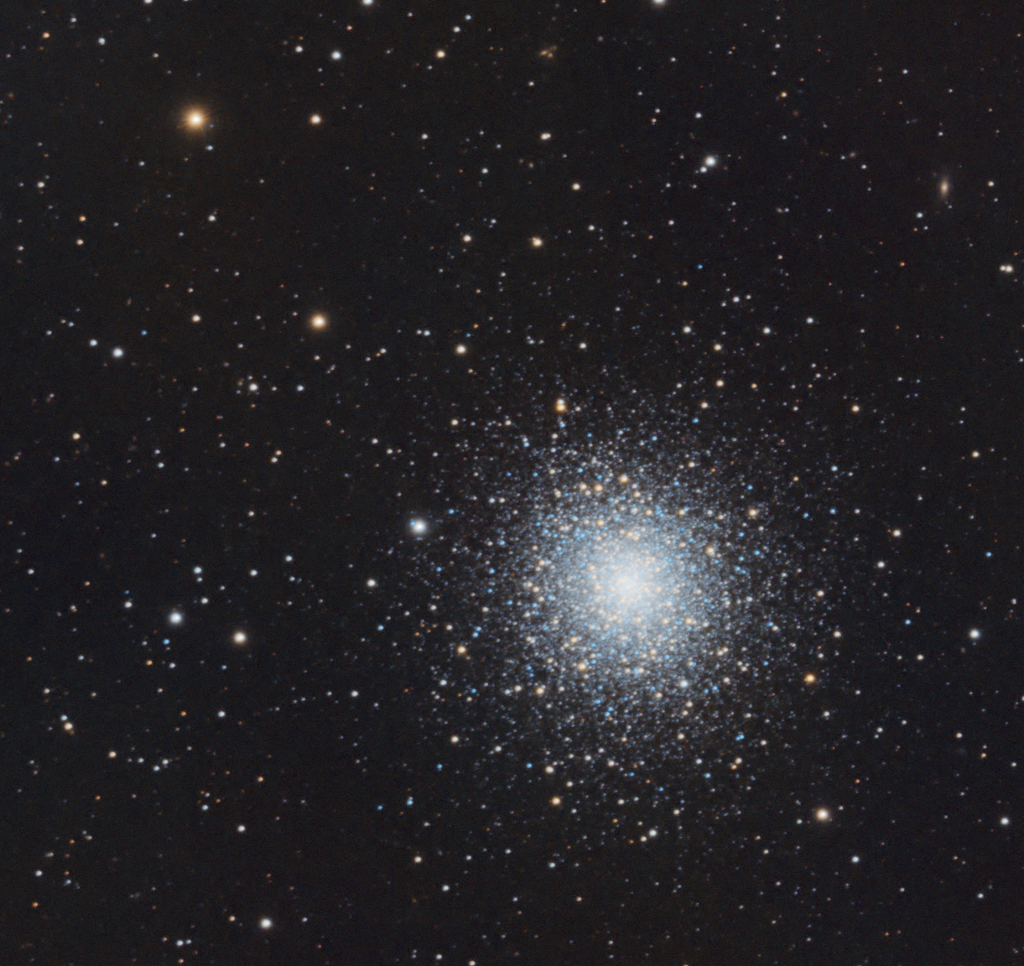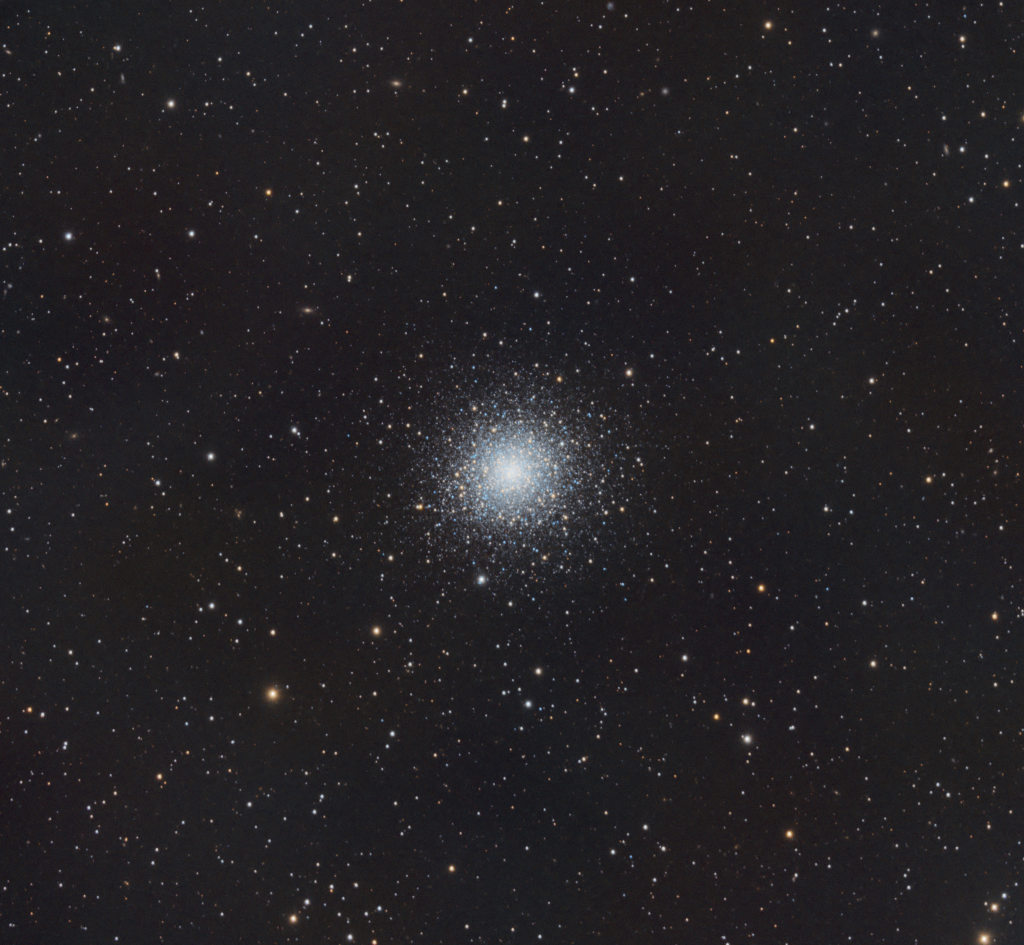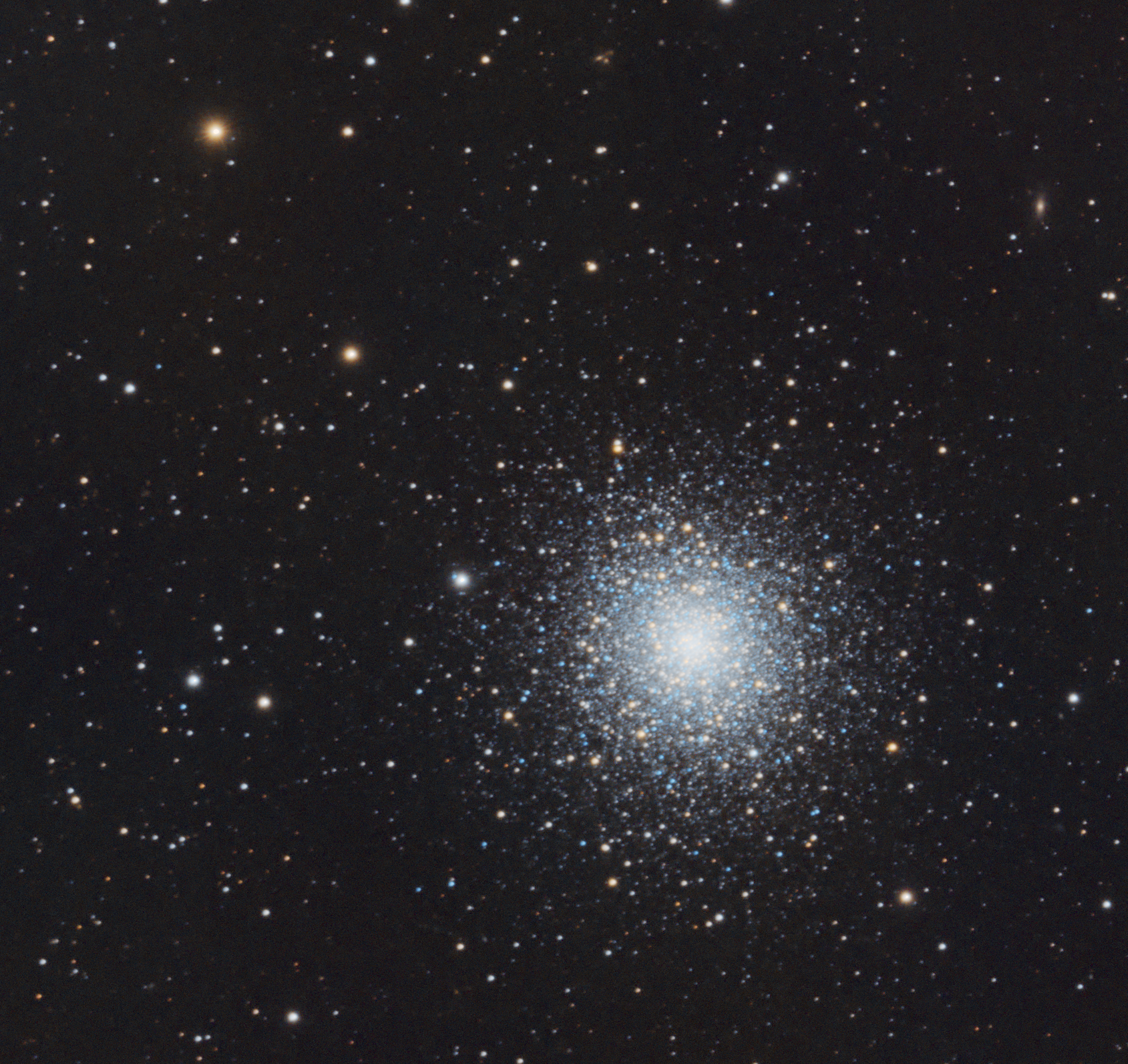
Similar Posts

Cone Nebula
Narrowband image of the cone-shaped absorption nebula in front of the brighter emission nebula in this interesting region of the Christmas Tree Cluster, about 2,700 light-years away.
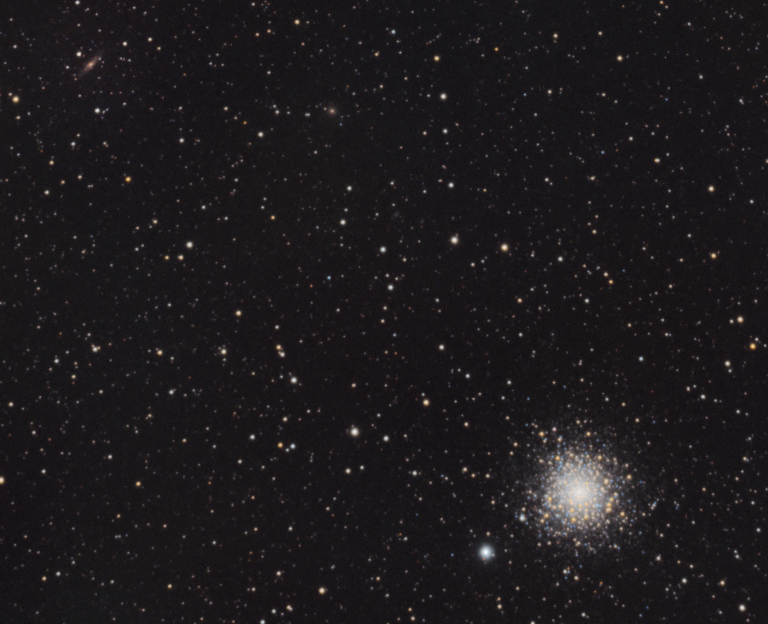
Another glob: M80
It’s globular cluster season, so here’s another one! M80 is found within the constellation Scorpius, and lies a distant 32,600 light-years away – making it one the small side from our vantage point. It contains several hundred thousand stars, and is one of the denser globular clusters in our galaxy. The faint galaxy in the…
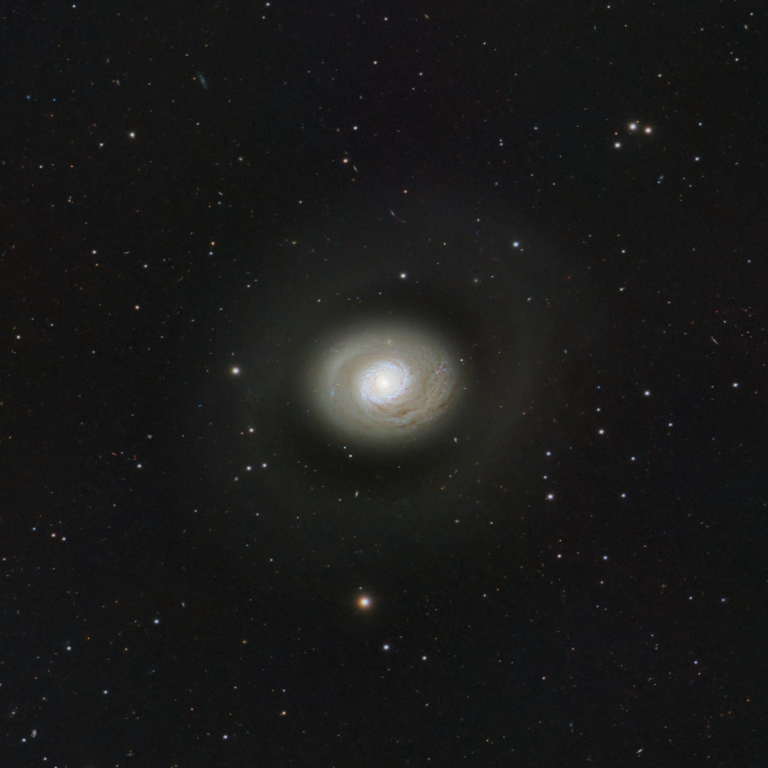
M94 / The “Cat’s Eye Galaxy”
Sometimes called the “Cat’s Eye Galaxy,” this is M94 – about 16 million light years away in the constellation Canes Venatici. You can barely see its faint outer ring surrounding it here, as well as several very distant background galaxies. It’s notable for challenging our understanding of the universe – it appears to have very…
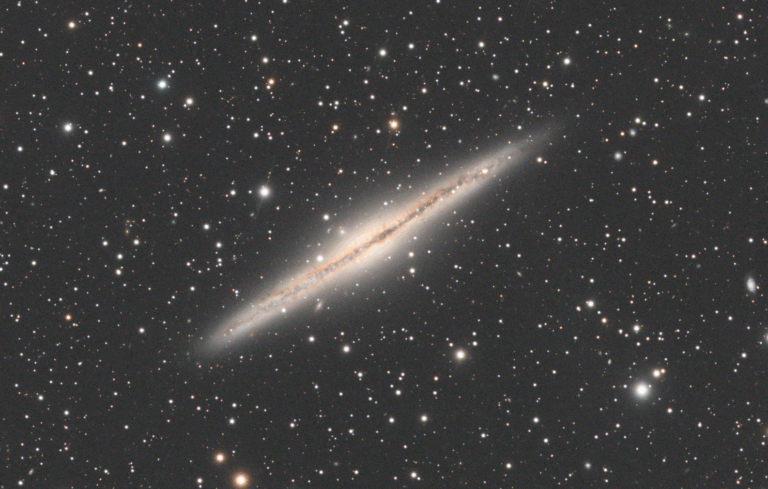
The “Outer Limits” Galaxy
This one’s also known as the “Silver Sliver” Galaxy, or more formally NGC 891. It’s about 30 million light-years away, well beyond our own local group. It’s thought to be quite similar to our own Milky Way! What I really geek out on, though, is the wider views here – there are so many other…
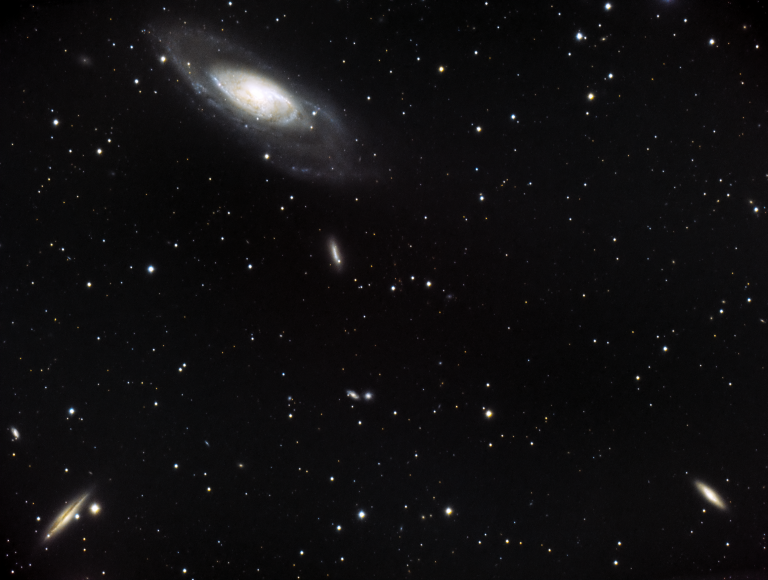
The galaxy M106
The larger galaxy in this image goes only by the boring name “M106”, but it’s anything but boring. About 23 million light-years away, M106 is pretty similar to Andromeda in its size and brightness. But M106 is a lot weirder. In addition to its slightly warped shape, M106 is the home of a giant water-vapor…
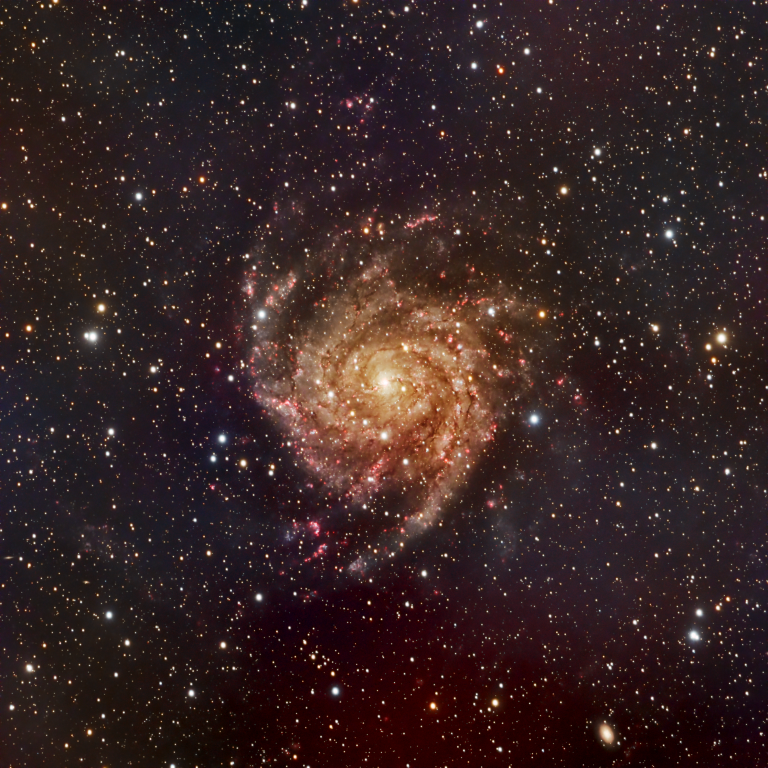
The Hidden Galaxy
This is IC342, located about 10 million light-years away. If it were anywhere else in the sky, it would be visible to the naked eye – but it lies behind the disk of our Milky Way galaxy, obscuring the view. This image is the result of 22 hours of total exposure time to try and…

